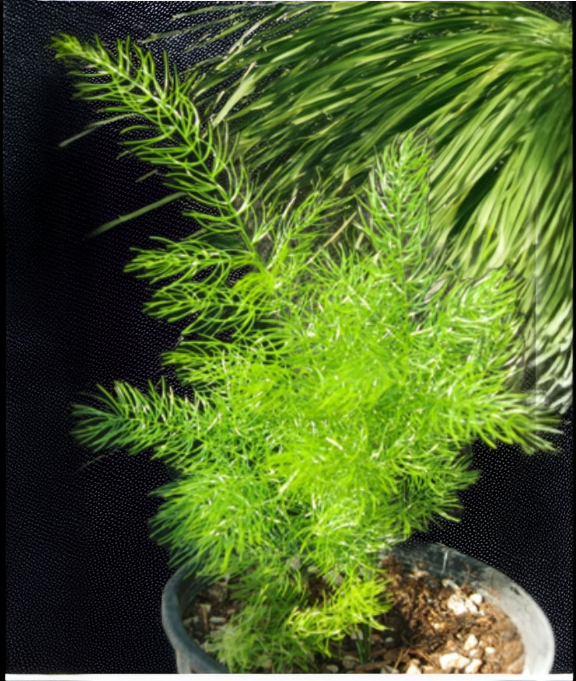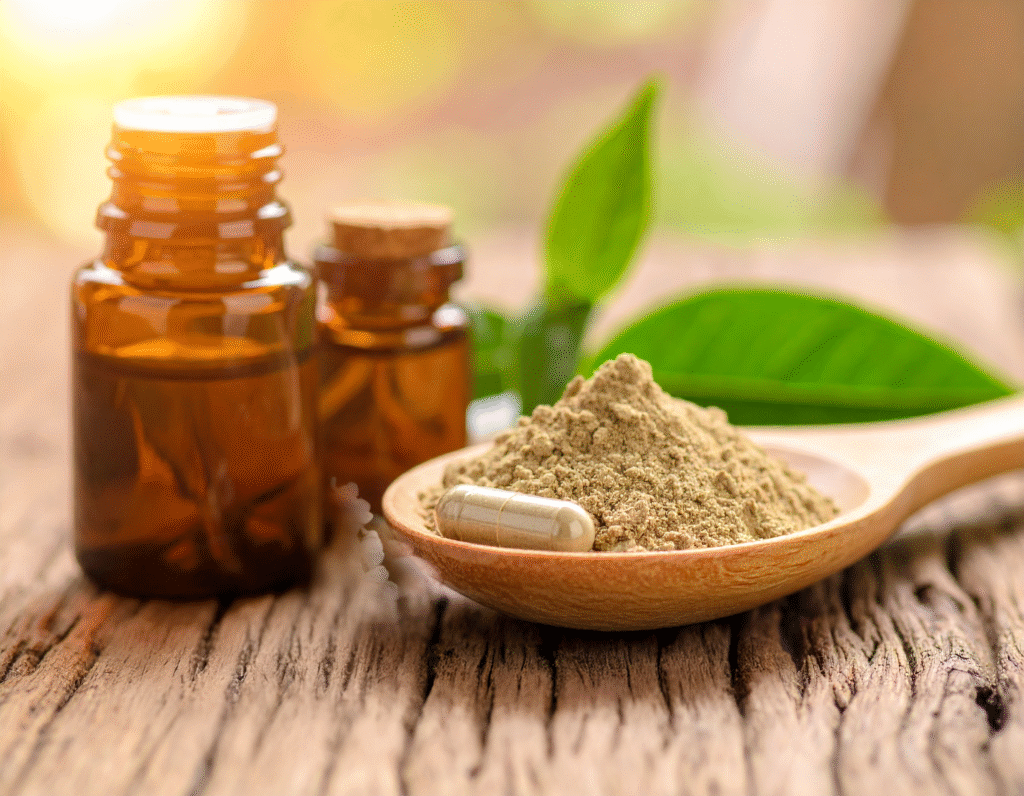
Natural Hormone Balance and Fertility Support: How Shatavari Can Help Women’s Health
Shatavari (Asparagus racemosus) is one of Ayurveda’s most celebrated herbs for supporting women’s health at every stage of life—from menstruation to menopause. Known as the “Queen of Herbs,” it nourishes the reproductive system, balances hormones, and gently promotes fertility. Discover how to grow, use, and benefit from this powerful ally for female vitality.

Active Ingredient:
Shatavari’s powerful effects on hormone balance and vitality come from its rich blend of natural compounds that nourish and regulate the body at a cellular level. The most important of these are steroidal saponins, phytoestrogens, and alkaloids—all of which contribute to its reputation as a restorative tonic for women’s health. Together, these bioactive components help modulate hormone activity, reduce inflammation, and strengthen the body’s stress response while promoting long-term reproductive wellness.

Download recipes, lifestyle tips, and an Ayurvedic cycle tracker to naturally harmonize your hormones and fertility!
Download Now
What is Shatavari and Why Is It Used for Women’s Health?
Shatavari is often used in postpartum Ayurvedic care to help rebuild strength and promote milk flow. But whether you’re preparing for pregnancy, balancing monthly cycles, or moving into menopause, Shatavari offers time-honored support for your hormonal health. This root can easily become part of your daily wellness ritual.

Pure, organic Shatavari root capsules for daily hormone and fertility support—gentle and effective!
Shop Now at Amazon

How to Use Shatavari for Hormone Balance
Shatavari (Asparagus racemosus) works gently and deeply to support hormonal harmony, making it one of the best herbs for restoring balance in women’s health. Its adaptogenic nature helps the body regulate estrogen and progesterone levels, reduce stress-induced imbalances, and nourish the reproductive system over time. The key to success with shatavari is consistency—it works gradually to bring the endocrine system back into equilibrium while calming the mind and replenishing physical vitality.
1. Shatavari Tea or Decoction
Simmer 1–2 teaspoons of dried, sliced shatavari root in 2 cups of water or milk for 15–20 minutes. Strain and drink once daily. This traditional Ayurvedic method supports hormone balance, hydration, and emotional steadiness—especially helpful during PMS or perimenopause.
2. Shatavari Powder (Churna)
Take ½–1 teaspoon of shatavari powder daily, stirred into warm milk, almond milk, or a smoothie. Add a touch of honey, cardamom, or cinnamon to enhance absorption and taste. This form is ideal for long-term support of hormones, skin moisture, and reproductive vitality.
3. Capsules or Tablets
For convenience, take 400–600 mg daily with meals. Capsules are a practical choice for those who prefer a neutral flavor and consistent daily dosing. Use for at least 6–8 weeks to see steady improvements in mood, cycle regularity, and energy.
4. Herbal Blends for Balance
Pair shatavari with complementary herbs for a fuller effect:
- With Ashwagandha: To reduce stress, balance cortisol, and restore adrenal health.
- With Maca: To enhance energy, libido, and hormonal stability.
- With Red Raspberry Leaf: To tone the uterus and support healthy menstrual cycles.
5. Timing & Duration
Take shatavari once or twice daily, morning or evening, depending on your needs. For best results, use consistently for 8–12 weeks, then take a short 1–2 week break before resuming. Because it builds balance gradually, steady use is more effective than sporadic intake.
6. Safety & Notes
Shatavari is gentle and well-tolerated by most women, but those with high estrogen sensitivity or hormonal conditions should consult a healthcare professional before use. Avoid during pregnancy unless directed by a practitioner. Always source high-quality, organic shatavari powder or root for purity and potency.
Quick Tip: Think of shatavari as a daily nourishment for your hormonal rhythm—best taken with warmth, consistency, and mindfulness. Over time, it helps restore equilibrium, energy, and emotional steadiness from the inside out.
Thyrafemme Balance: Adaptogenic Plant Blend for Women
- Features adaptogens: Ashwagandha, Rhodiola, Lemon Balm, Kelp/Iodine, Schisandra
- Plus selenium, zinc, L-tyrosine for full-spectrum hormone support
- No synthetic hormones—just time-tested botanicals and minerals
Common Ways to Take Shatavari
Shatavari Powder: Mix ½–1 teaspoon with warm milk or almond milk. Sweeten lightly with honey for a soothing, nourishing tonic.
Capsules / Tablets: A convenient option for daily use. Follow the recommended dosage on your product label for steady hormonal support.
Tea / Infusion: Enjoy a mildly bitter, grounding taste by steeping dried root or powder in hot water for 10–15 minutes. Drink warm for balance and relaxation.
Women’s Wellness Tip: Combine with warm milk and a pinch of cardamom before bed to support calm hormones and restful sleep.

Fertility and Reproductive Support with Shatavari
For centuries, shatavari (Asparagus racemosus) has been known as one of the most powerful herbal allies for fertility, conception, and postpartum recovery. In Ayurveda, it’s regarded as a rasayana—a rejuvenative herb that restores vitality and nourishes the reproductive system. Shatavari’s root compounds, including phytoestrogens and steroidal saponins, support natural hormone balance, egg health, and a fertile environment for conception. It strengthens both the body and mind, helping women move through each reproductive stage with calm and stability.
Promotes Egg Health and Ovulation:
Shatavari is rich in phytoestrogens, plant-based compounds that gently mimic the body’s natural estrogen. These compounds nourish reproductive tissues, enhance ovarian function, and help regulate the menstrual cycle. By supporting ovulation and promoting a balanced luteal phase, shatavari helps create optimal hormonal conditions for conception. It’s especially beneficial for women with irregular cycles or mild hormonal imbalances that may affect fertility.
Supports Cervical Mucus Production:
A key sign of fertility is the presence of healthy, well-hydrated cervical mucus. Shatavari’s moistening and cooling properties help replenish fluids and encourage a fertile cervical environment, improving the chances of sperm survival and conception. Its ability to restore internal hydration also supports vaginal comfort and tissue elasticity, particularly for women affected by dryness or depletion.
Postpartum Replenishment:
In traditional Ayurvedic care, shatavari is given after childbirth to support lactation and recovery. It helps the body rebuild strength, balance hormone levels, and promote milk production through its nourishing and grounding nature. Rich in minerals and plant estrogens, shatavari gently restores vitality to mothers, helping them recover from physical exhaustion while promoting emotional steadiness and healthy bonding with their newborns.
How to Use Shatavari for Hormone Balance
Shatavari (Asparagus racemosus) is best taken consistently and in small, nourishing doses to restore hormonal harmony and balance the body’s natural rhythms. It works gently to regulate estrogen and progesterone, calm the nervous system, and replenish moisture and vitality—especially for women experiencing PMS, perimenopause, or postpartum recovery. The key is to choose the form that best fits your lifestyle and enjoy it as part of a daily ritual of self-care.
Shatavari Powder:
Mix ½–1 teaspoon of shatavari powder into a cup of warm milk, almond milk, or oat milk. Add a touch of honey for sweetness and better absorption. This traditional Ayurvedic preparation deeply nourishes the reproductive system, balances hormones, and supports calm, restorative energy.
Capsules or Tablets:
For convenient, consistent use, take shatavari in capsule form—typically 400–600 mg daily with meals. Capsules offer an easy way to support hormone balance, especially for those who prefer a flavorless, travel-friendly option.
Tea or Infusion:
Steep 1–2 teaspoons of dried shatavari root or ½ teaspoon of powder in hot water for 10–15 minutes. The tea has a mildly bitter, grounding taste and can be blended with herbs like cinnamon, ginger, or chamomile for added flavor and relaxation. Enjoy once or twice daily for gentle hormonal support and hydration.
Ageless Energy Solution: Restore Balance Naturally
- Focuses on nutrition, gentle movement, and food-based stress relief
- Tips and protocols for hormone and energy balance—no fad diets
- Great for adults seeking natural support for mood and metabolism
Women’s Wellness Tip:
Combine shatavari with warm milk and a pinch of cardamom before bed to soothe the nervous system, support calm hormone activity, and promote deeper, more restorative sleep. This simple nightly ritual helps replenish your energy and balance your hormones naturally over time.
Quick Tip: Shatavari’s effects are cumulative—give it at least 6–8 weeks of consistent use to feel its full benefits on mood, cycles, and vitality. For enhanced fertility, pair shatavari with maca (for hormone and energy balance) or red raspberry leaf (for uterine tone and strength). Together, they form a powerful, natural foundation for conception and reproductive health.
Over time, shatavari works as a gentle tonic—restoring fertility, balancing the hormones that influence conception, and strengthening the reproductive organs naturally. Its cooling, rejuvenating nature makes it safe for long-term use as part of a holistic fertility or postpartum wellness plan.
Fertility & Reproductive Support with Shatavari
- Promotes Egg Health and Ovulation: Rich in phytoestrogens that help nourish and strengthen reproductive tissues.
- Supports Cervical Mucus Production: Encourages a more fertile environment for conception and reproductive balance.
- Postpartum Replenishment: Traditionally used in Ayurveda to support lactation and recovery after childbirth.
Gardener’s Tip: Shatavari grows best in warm climates with loose, sandy soil. You can grow it as a perennial in USDA Zones 9–11.
This herbal recipe is shared for educational purposes only, based on traditional use and available sources. It is not medical advice. Please consult your healthcare provider before use, especially if pregnant, nursing, or on medication.
Okinawa Flat Belly Tonic: Daily Detox in a Glass
Supercharge your mornings—metabolic boost, clean ingredients, real results.
Start My DetoxCombining Shatavari with Other Hormone-Supporting Herbs
While shatavari on its own is a powerful tonic for hormone health, combining it with other complementary herbs can create a more complete and synergistic effect. In Ayurveda and modern herbal practice, shatavari is often paired with adaptogens and tonics that address different aspects of hormonal and emotional wellness—balancing stress, energy, and reproductive vitality at the same time. The result is a well-rounded approach to supporting the endocrine system, fertility, and overall feminine balance.
With Ashwagandha:
This pairing is a classic in Ayurveda for grounding both body and mind. Ashwagandha helps regulate cortisol levels and supports adrenal health, reducing fatigue and emotional stress that can disrupt hormones. When combined with shatavari’s cooling and nourishing effects, the two create a perfect balance between calm and strength—ideal for women experiencing burnout, anxiety, or irregular cycles due to stress.
With Maca Root:
Maca complements shatavari by boosting energy, libido, and stamina while supporting healthy hormone production. Where shatavari nourishes and replenishes, maca energizes and revitalizes. Together, they enhance reproductive vitality, regulate menstrual function, and promote hormonal harmony—especially during perimenopause or times of low energy and mood.
With Licorice Root:
Licorice root adds a cooling and harmonizing balance to shatavari’s deeply nourishing properties. It supports the adrenal glands, soothes digestion, and enhances the body’s ability to manage stress. The combination helps reduce inflammation, stabilize mood, and sustain long-term hormonal balance, particularly for women with dryness or heat-related symptoms like irritability or hot flashes.
Each of these herbal pairings offers a unique balance—grounding, energizing, or cooling—depending on your body’s needs. Shatavari serves as the foundation, while the companion herbs fine-tune the formula for your specific hormonal or emotional goals.
Quick Tip: Create your own “hormone harmony blend” by mixing equal parts shatavari and ashwagandha for daily stress balance, or shatavari and maca for fertility and vitality. Blend ½ teaspoon of each into warm milk or smoothies for an easy, restorative tonic.
Did you know?
In Sanskrit, “Shatavari” means “she who possesses a hundred husbands,” highlighting its reputation as a fertility and rejuvenation tonic.
Want More Natural Healing Tips? Subscribe to Health Intel Daily for More!
SubscribeThe content on this website is for informational purposes only and is not a substitute for professional medical advice, diagnosis, or treatment. Always seek the advice of your physician or other qualified health provider with any questions you may have regarding a medical condition.
1. Panda, S., & Kayastha, A. (2018). Shatavari (Asparagus racemosus): A Review of Its Ayurvedic Uses, Phytochemistry and Pharmacological Activities.
2. National Center for Complementary and Integrative Health: nccih.nih.gov
3. Tiwari, P., et al. (2017). Herbal Medicines Used in Women’s Health: An Overview. Journal of Drug Delivery and Therapeutics.
4. Indian Journal of Medical Research: ijmr.org.in